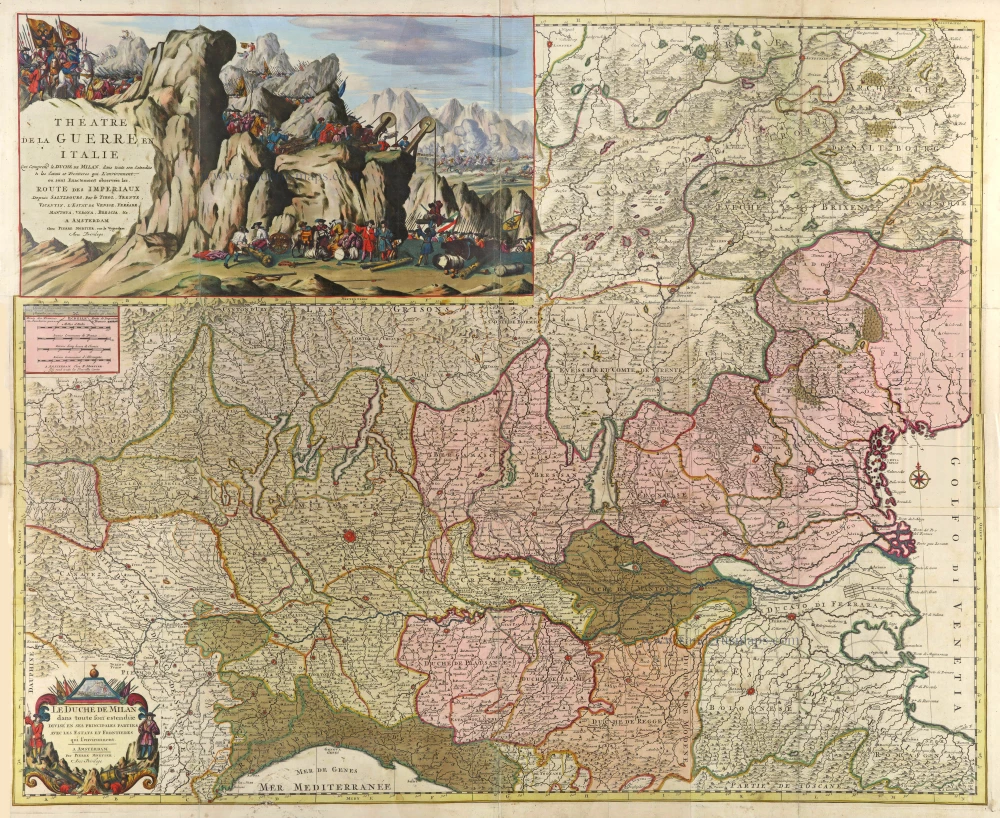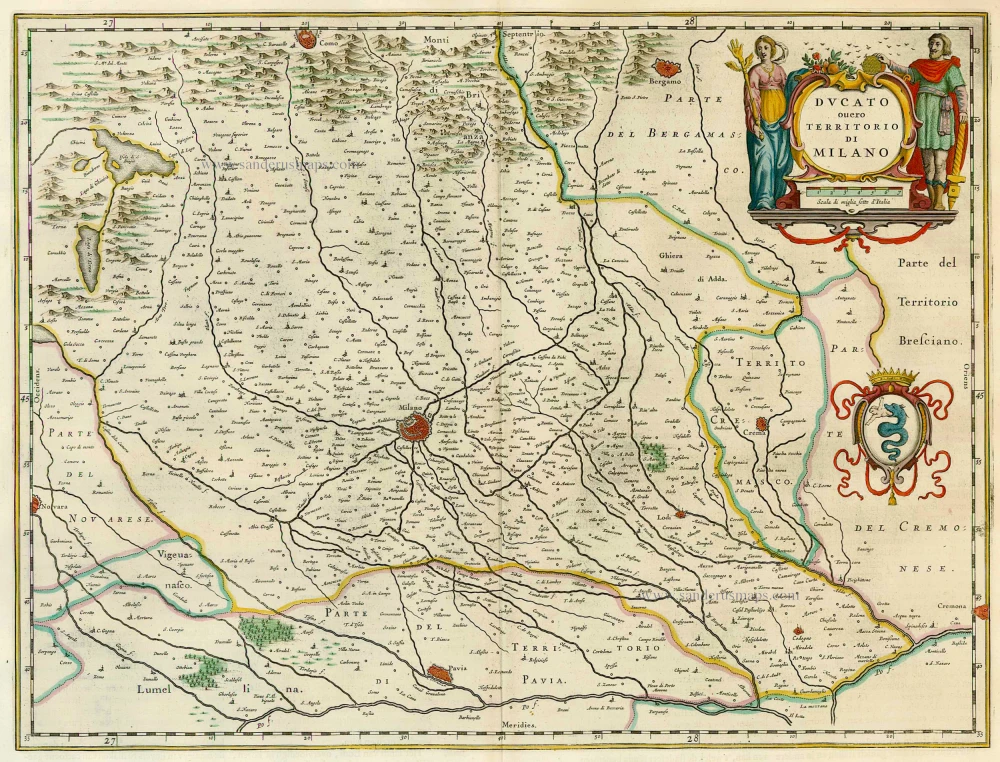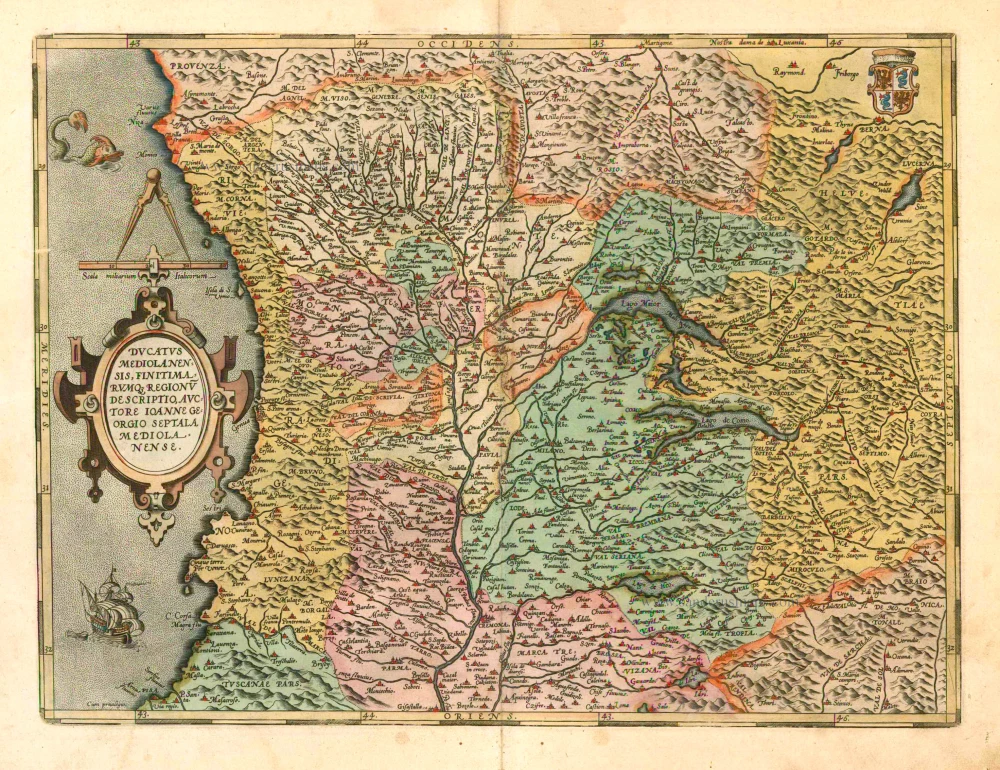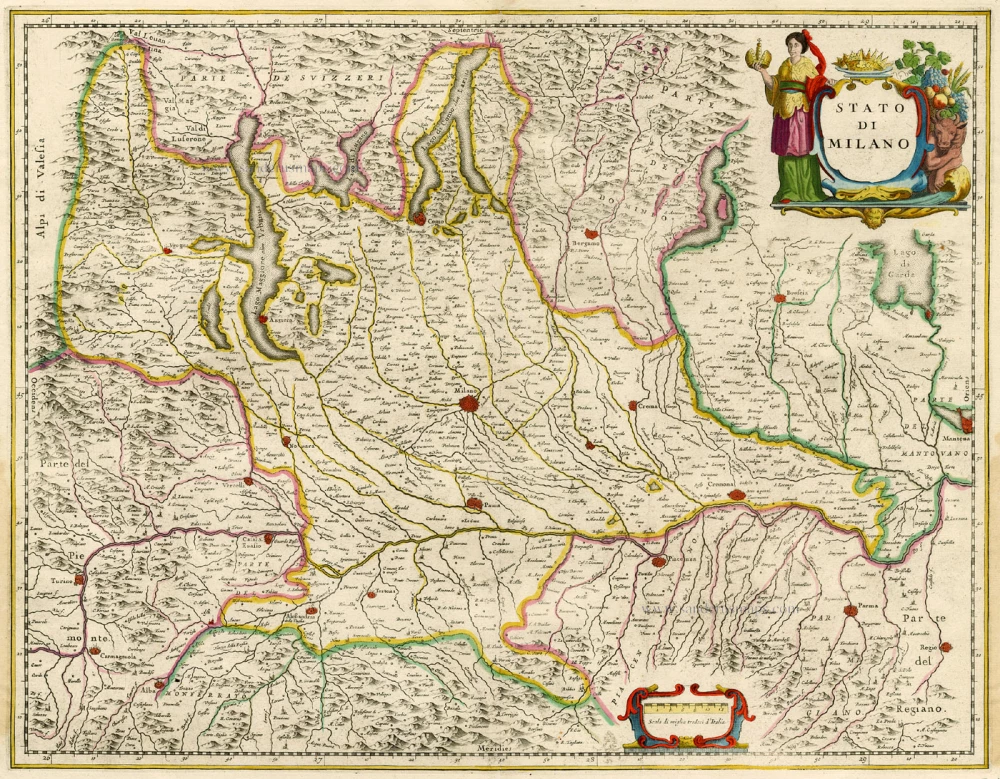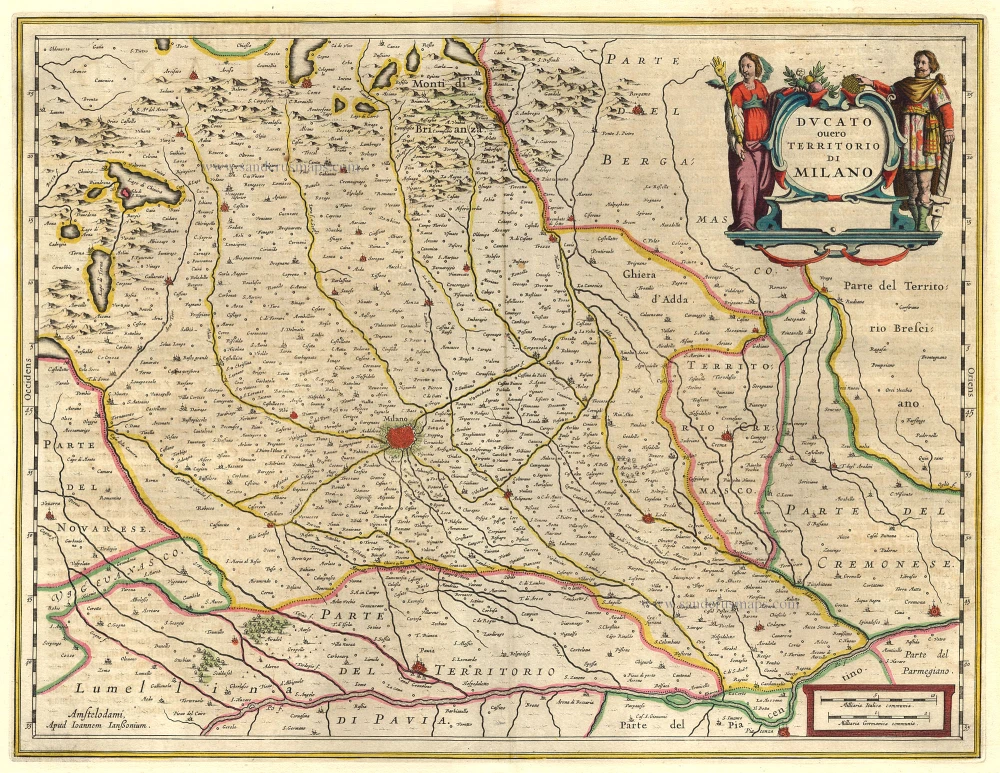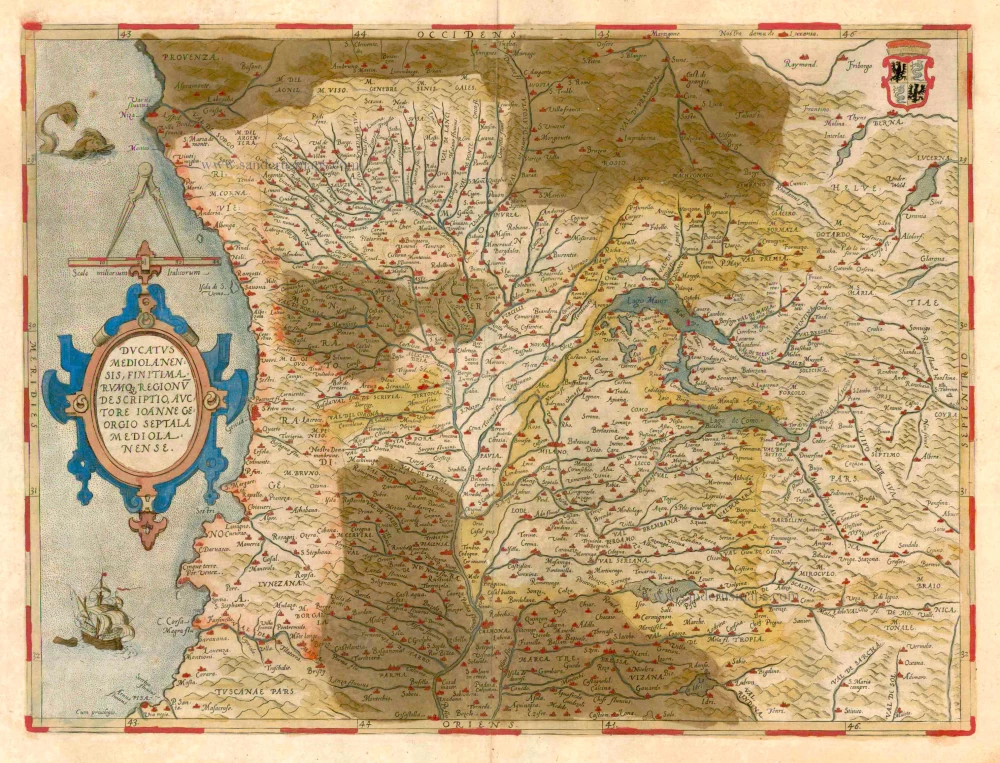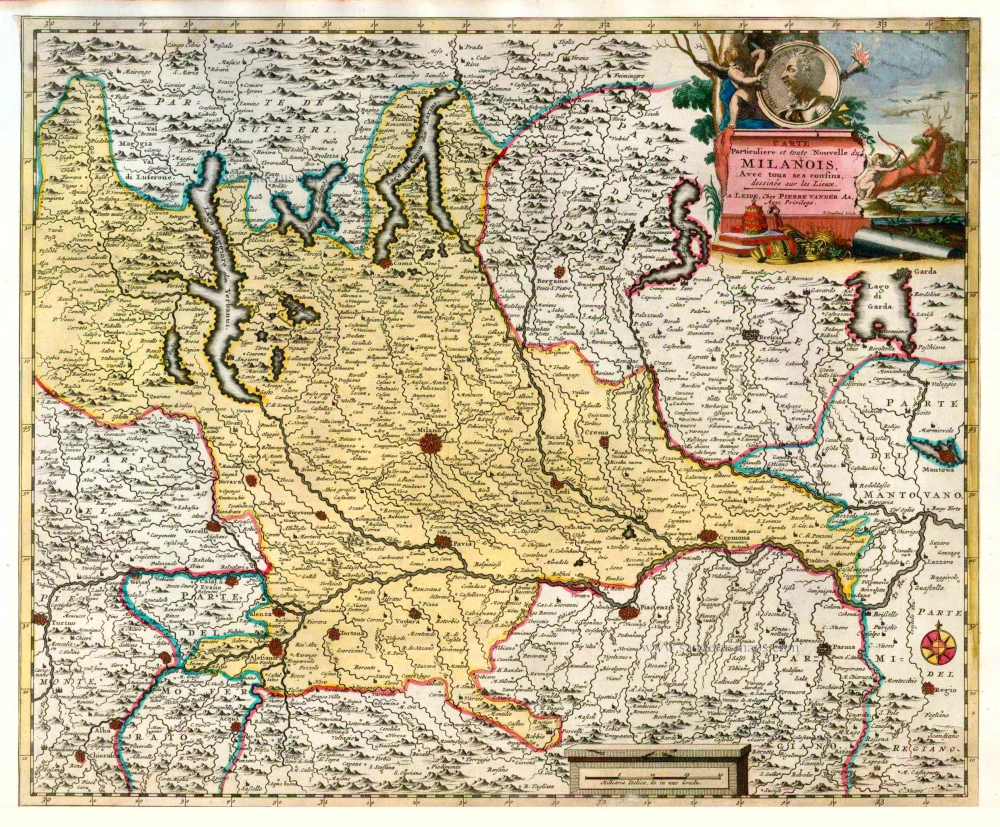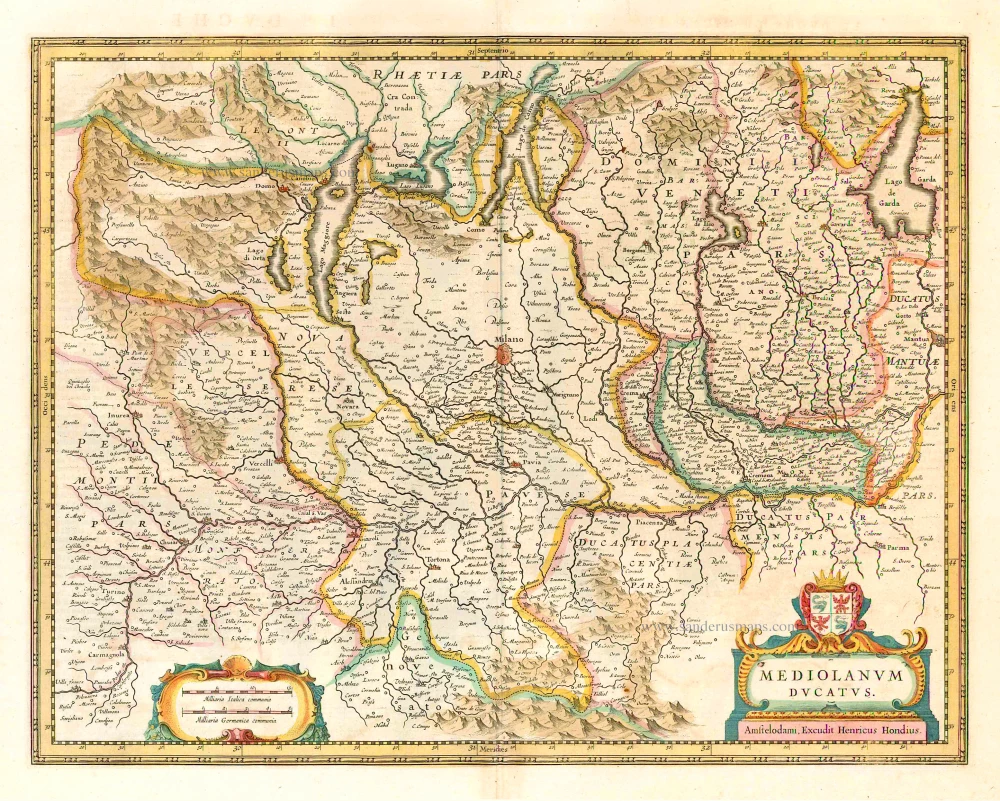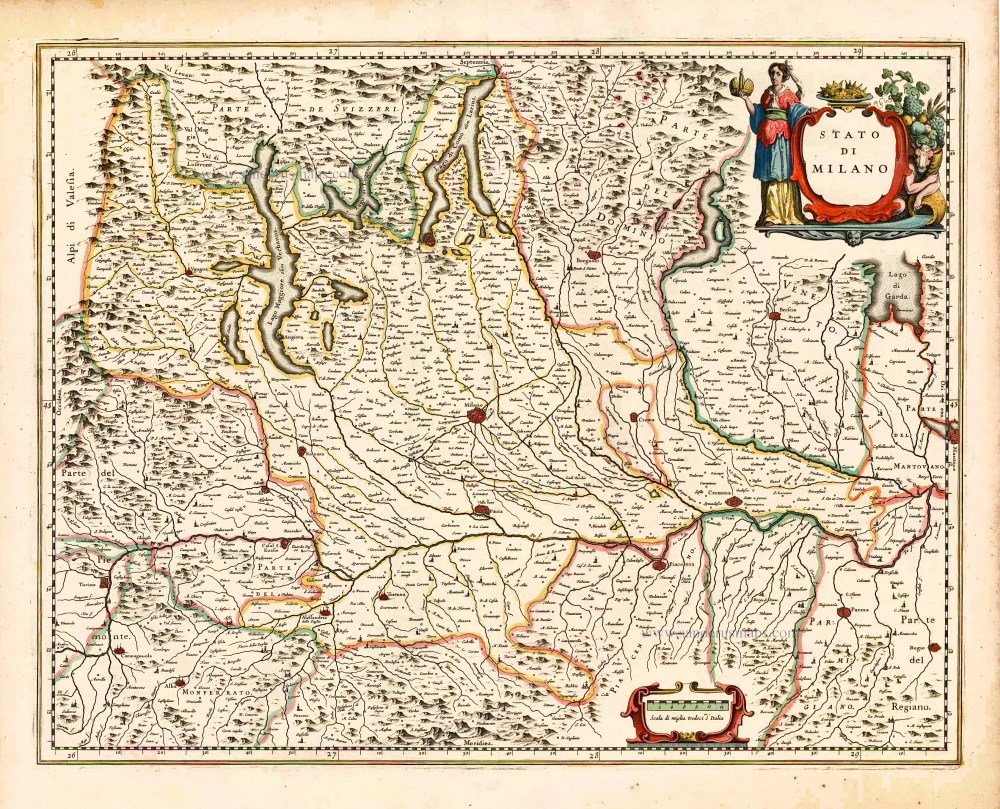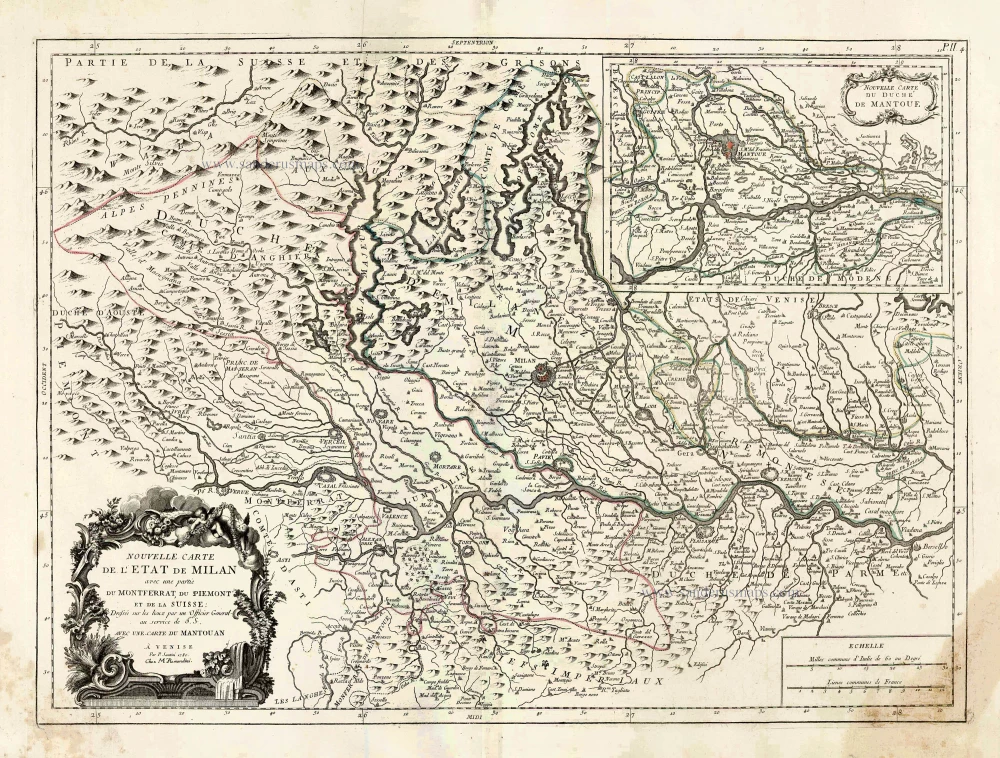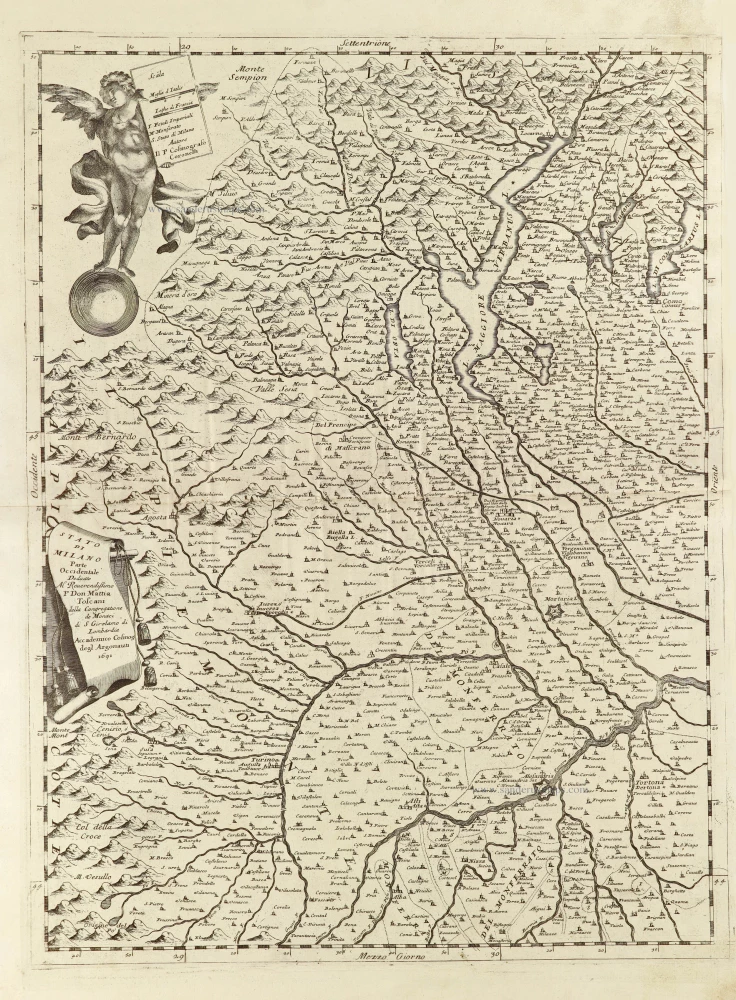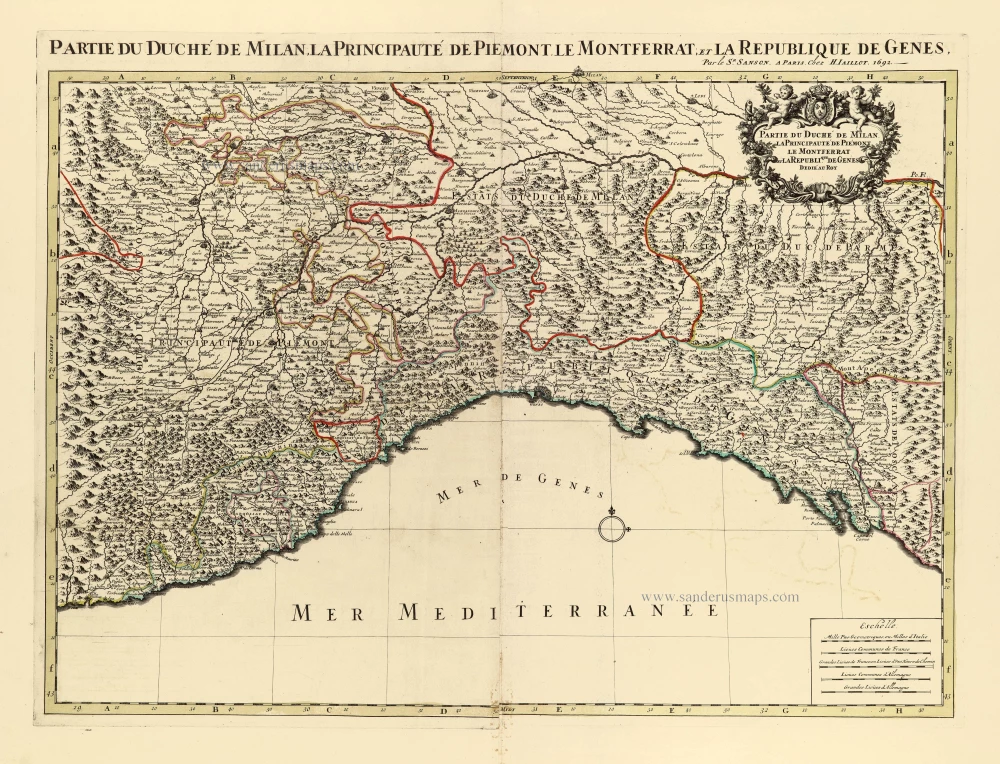Spectacular wall map of North Italy. Heightened in gold.
Duchy of Milan by Pierre Mortier. 1703
This war map was made by joining together four folio sheets (each also available separately), some having their own title, which was cut off when assembled for mounting. The bottom right sheet is only known from mounted copies.
RARE!
Covens & Mortier. A Map Publishing House in Amsterdam. 1721-1866.
For almost two centuries, the Amsterdam firm of Covens & Mortier was the most significant and crucial Dutch publishing house in commercial cartography. In terms of quantity, it was the biggest contemporary map-trading house worldwide, distributing innumerable maps, atlases, globes, and books.
Pieter (Pierre) Mortier (Leiden, 1661 – Amsterdam, 1711)
Nothing is known about the youth of Pieter Mortier. He studied in Paris from 1681 to approximately 1685. He must have come into contact with French 'libraires' and learned the bookselling trade there. In 1685, he returned to Amsterdam and opened a small bookshop. He joined the Book, Art Sellers' and Printers' Guild the same year.
Pieter sold books in Dutch and foreign languages but also published books himself, usually in French. His business flourished so much that in 1688, he was forced to rent another house on the Vijgendam.
Pieter Mortier's first privilege for maps was granted by the States of Holland and West Friesland on September 15, 1690. It refers to Sanson's maps, which he 'is printing and correcting with great pains and care'.
Pieter began publishing maps and atlases on a large scale. By the beginning of the 18th century, he had become so wealthy that he could purchase three houses in Amsterdam: the Beurssluis, on the Vijgendam, and the Heremietensteeg. He rebuilt the Vijgendam house into a large, prestigious structure that would serve for over a century as a shop, business, and residential structure for Covens & Mortier's publishing house.
He died on February 13, 1711, after a brief illness. The company continued under the management of Pieter's widow, Amelia' s-Gravesande.
After she died in 1719, her son, Cornelis, took over the management for a few years.
On November 20, 1721, a company was founded by Cornelis Mortier and Johannes Covens I. The latter was married the same year to Cornelis's sister. From that year on, the name of :
Covens & Mortier.
Their firm would see a massive expansion in the next 140 years. In 1732, the heirs sold the property to their brother Cornelis and his partner Covens. Their main competitors were Reinier & Josua Ottens and Gerard Valck & Petrus Schenck. After the death of Johannes Covens I (1774), his son Johannes Covens II (1722-1794) entered the business. In 1778, Johannes added a new company name :
J. Covens & Son.
Johannes Covens II was succeeded by his son Cornelis Covens (1764-1825), who, in turn, brought Peter Mortier IV, the great-grandson of Petrus Mortier I, into the business. The name was from 1794 to 1866:
Mortier, Covens & Son.
The last Covens in the series was Cornelis Johannes Covens (1806-1880).
Covens & Mortier had a large stock of atlases and maps, including Delisle, Jaillot, Johannes Janssonius, Sanson, and Claes Jansz. Visscher, Nicolaas Visscher, and Frederik de Wit. For decades, the press produced an impressive number of atlases.
Théatre de la Guerre en Italie Qui comprend le Duché de Milan, dans toute son Estendue & les Estats et Frontières qui l'environnent
Item Number: 29507 Authenticity Guarantee
Category: Antique maps > Europe > Italy
Spectacular, beautifully coloured wall map of the Duchy of Milan by Pierre Mortier.
Title: Théatre de la Guerre en Italie Qui comprend le Duché de Milan, dans toute son Estendue & les Estats et Frontières qui l'environnent
ou sont Exactement observées les Route des Imperiaux depuis Saltzbourg, par le Tirol, Trente, Vicentin, l'Estat de Venise, Ferrare, Mantoua, Verona, Brescia, &c.
A Amsterdam chez Pierre Mortier, sur le Vygendam.
Avec Privilege.
A Amsterdam Chez P. Mortier
Qui vend toutte les Nouvelles Cartes.
Second title above map: Le Duché de Milan dans toute son estendue divisé en ses principales parties avec les Estats et Frontières qui l'environnent.
Par Pierre Mortier.
Avec Privilege.
Date of the first edition: c. 1700.
Date of this map: 1703.
Second state of three.
Copper engraving, printed on paper.
Map size: 785 x 965mm (30.91 x 37.99 inches).
Sheet size: 850 x 1010mm (33.46 x 39.76 inches).
Verso: Blank.
Condition: Original coloured, with some highlights in gold. Four sheets joined together, joints reinforced at the back.
Condition Rating: A.
Separate publication.
Appeared also in some copies of: Atlas nouveau des Cartes géographiques choisies, ou le grande théâtre de la guerre en Brabant, Flandres ... sur le Rhin, Moselle, Mayn ... dans la Bavière, Souabe ... le théâtre de la guerre du Nord, &c. et toutes les cartes géographiques tant générales que particulières d'Italie, le Véronois, Vicence ... auquel on a joint les cartes d'Espagne, Portugal, de la France &c. le théâtre de la guerre en Amérique ... Amsterdam, P. Mortier, 1703. (Koeman, Mor 3) - 'Contrefaçon hollandaise' of the French Atlas François.
This war map was made by joining together four folio sheets (each also available separately), some having their own title, which was cut off when assembled for mounting. The bottom right sheet is only known from mounted copies.
RARE!
Covens & Mortier. A Map Publishing House in Amsterdam. 1721-1866.
For almost two centuries, the Amsterdam firm of Covens & Mortier was the most significant and crucial Dutch publishing house in commercial cartography. In terms of quantity, it was the biggest contemporary map-trading house worldwide, distributing innumerable maps, atlases, globes, and books.
Pieter (Pierre) Mortier (Leiden, 1661 – Amsterdam, 1711)
Nothing is known about the youth of Pieter Mortier. He studied in Paris from 1681 to approximately 1685. He must have come into contact with French 'libraires' and learned the bookselling trade there. In 1685, he returned to Amsterdam and opened a small bookshop. He joined the Book, Art Sellers' and Printers' Guild the same year.
Pieter sold books in Dutch and foreign languages but also published books himself, usually in French. His business flourished so much that in 1688, he was forced to rent another house on the Vijgendam.
Pieter Mortier's first privilege for maps was granted by the States of Holland and West Friesland on September 15, 1690. It refers to Sanson's maps, which he 'is printing and correcting with great pains and care'.
Pieter began publishing maps and atlases on a large scale. By the beginning of the 18th century, he had become so wealthy that he could purchase three houses in Amsterdam: the Beurssluis, on the Vijgendam, and the Heremietensteeg. He rebuilt the Vijgendam house into a large, prestigious structure that would serve for over a century as a shop, business, and residential structure for Covens & Mortier's publishing house.
He died on February 13, 1711, after a brief illness. The company continued under the management of Pieter's widow, Amelia' s-Gravesande.
After she died in 1719, her son, Cornelis, took over the management for a few years.
On November 20, 1721, a company was founded by Cornelis Mortier and Johannes Covens I. The latter was married the same year to Cornelis's sister. From that year on, the name of :
Covens & Mortier.
Their firm would see a massive expansion in the next 140 years. In 1732, the heirs sold the property to their brother Cornelis and his partner Covens. Their main competitors were Reinier & Josua Ottens and Gerard Valck & Petrus Schenck. After the death of Johannes Covens I (1774), his son Johannes Covens II (1722-1794) entered the business. In 1778, Johannes added a new company name :
J. Covens & Son.
Johannes Covens II was succeeded by his son Cornelis Covens (1764-1825), who, in turn, brought Peter Mortier IV, the great-grandson of Petrus Mortier I, into the business. The name was from 1794 to 1866:
Mortier, Covens & Son.
The last Covens in the series was Cornelis Johannes Covens (1806-1880).
Covens & Mortier had a large stock of atlases and maps, including Delisle, Jaillot, Johannes Janssonius, Sanson, and Claes Jansz. Visscher, Nicolaas Visscher, and Frederik de Wit. For decades, the press produced an impressive number of atlases.

